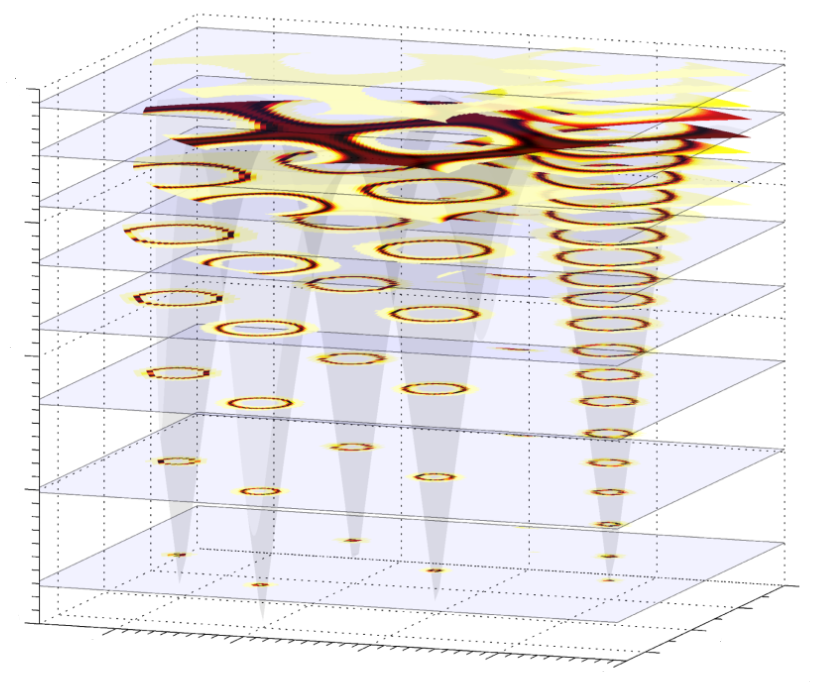The Laboratory for Quantum Magnetism performs fundamental research in magnetism and correlated electron materials. Our activities span from synthesis of novel materials over low-temperature inhouse techniques, neutron and X-ray scattering to theory and modeling. Below a few focal points are described:
Quantum Magnetism:
The study of interacting spin systems remain at the forefront of condensed matter physics for several reasons. Firstly, it provides simple and well defined physical realisation of fundamental theoretical models, which find wide applications within condensed matter physics and beyond. Secondly, magnetism or spin-degrees of freedom plays a direct role in several contemporary correlated electron phenomena. It is the leading candidate for the mechanism of high-temperature superconductivity and the direct cause of colossal magneto-resistance. The theoretical understanding of quantum magnets has and is being developed in close interplay with experimental studies. The objective is not just to predict the properties of the specific system, but to understand the nature of the physical processes in the system.
Neutron Scattering:
Neutrons provide an ideal tool to study fundamental magnetism in bulk materials. From determining magnetically ordered ground states, to mapping the excitation spectra of quantum magnets. We perform neutron scattering at various sources around the globe. We are active in development of new instruments, such as the CAMEA concept, at PSI in Switzerland and for the future European Spallation Source in Sweden.
High-temperature superconductivity:
We investigate magnetic properties of cuprate and iron-based high-temperature superconductors. We discovered the field induced spin-density wave in La2-xSrxCuO4[lake nature], the universality of the so-called hour-glass dispersion[christensen prl], which is present even in the iron-based superconductors [tsyrulin njp].
Square lattice antiferromagnets:
Among the simplest possible magnetic model systems are the spin-chain, the square lattice and the cubic lattices. We are pushing the limit of understanding this fundamental model system by combining neutron and X-ray spectroscopy with new theoretical methods. We discovered the zone-boundary quantum effect. [Ronnow prl 2001, Christensen PNAS 2007]. We have quantified how parent cuprate superconductors map onto the square lattice spin model [dalla piazza prb]. And we have partaken in employing new X-ray spectroscopic methods to measure spin-excitations new cuprate samples including single atomic layers [guarise prl, dean natmat]. Currently we are extending these investigations to iridates. And we are finalising the development of a variational wavefunction technique to finally shed light on the physical nature of the zone boundary anomaly.
Dipolar quantum magnets:
Dpolar interactions are present in all magnetic systems. In materials, however, there often exists various sources of exchange interactions which prevent manifestation on purely dipolar magnetism. The compounds LiRF4 where R = Ho, Er, Yb, Gd, etc.. is a rather unique family where dipolar interactions are dominant over negligible exchange interactions. They thus allow us to address purely-dipolar quantum magnetism in materials. One fascinating aspect of this family is that the choice of R ions determines the spin symmetry: an Ising ferromagnet is realised with R = Ho, an XY antiferromagnet with Er or Yb and Heisenberg magnets with Gd for instance. We have demonstrated with these model magnets a variety of novel phenomena, including 1. Quantum phase transition coupled to a nuclear spin bath (H- M. Ronnow et al., Science 2002), 2. Quantum and thermal criticality and dimensional reduction in dipolar antiferromagnets (C. Kraemer et al., Science 2012; P. Babkevich et al., PRL 2016). We are currently gaining a broader and deeper perspective through investigating mixed anisotropy, non-equilibrium dynamics, crystal fiels effects and Heisenberg case, to name a few.